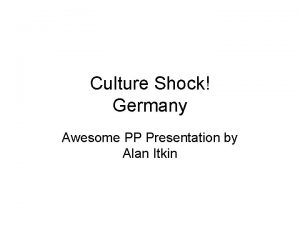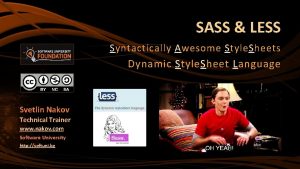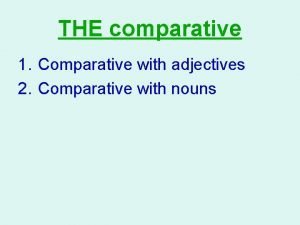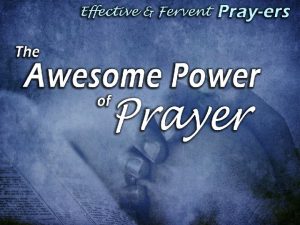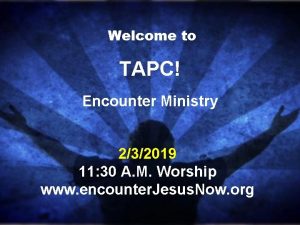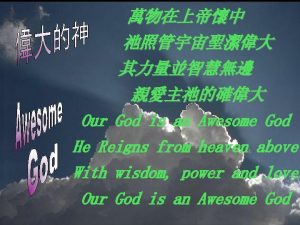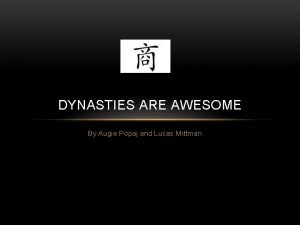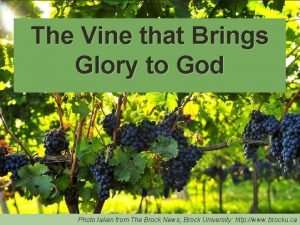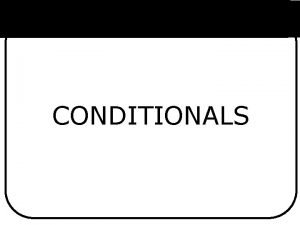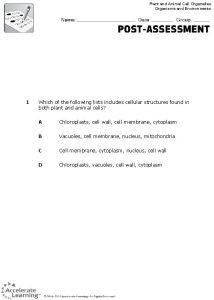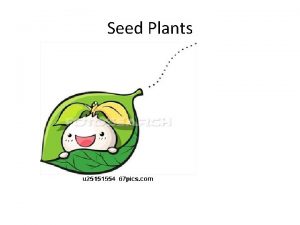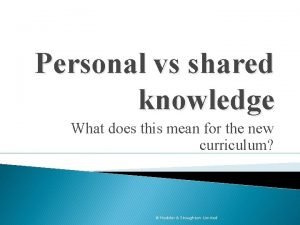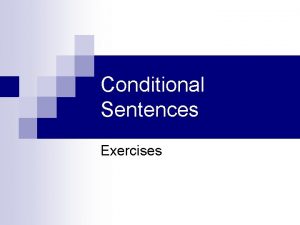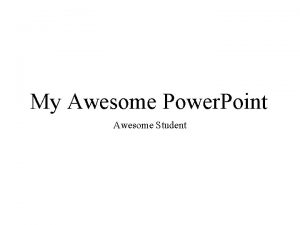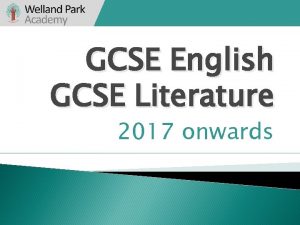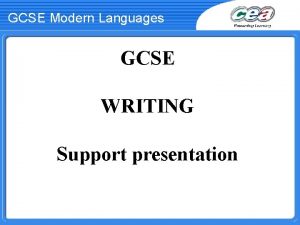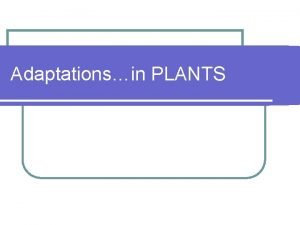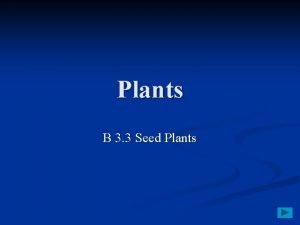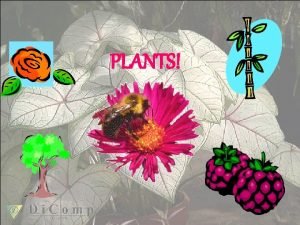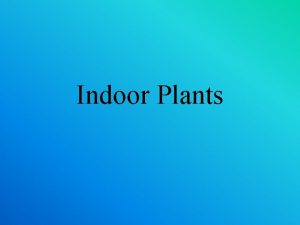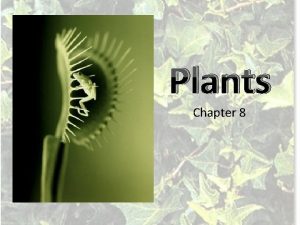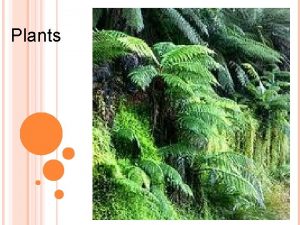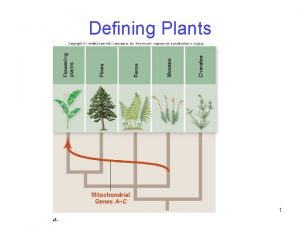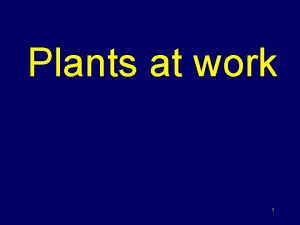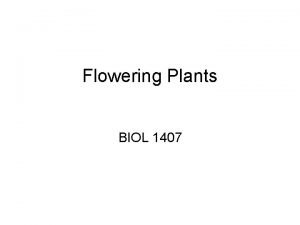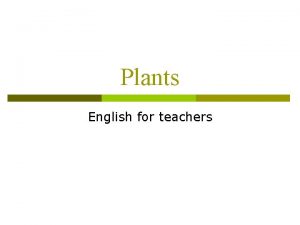Plants are awesome They really are GCSE Knowledge


































- Slides: 34

Plants are awesome They really are!

GCSE Knowledge • Plant Cells – draw one now • Plant growth – what effects it? • Plant nutrition – what this mean? • Plant distribution – what effects it? • A 2 – photosynthesis and hormones

Right let us begin • Why do plants need energy? • To do photosynthesis, DNA replication, growth, active transport • What processes do they use to create a store of energy? • Photosynthesis, respiration (anaerobic and aerobic) • Two equations write them now!

ATP • What is it? • How is it made? • How is it used? • What are it’s properties? • Small amount of malleable usable energy, soluble, easily broken down, transfers energy by phosphate groups, can’t leave the cell so readily available

Plants and energy • Both Respiration and Photosynthesis occur at the same time, dependent on light intensity • The light intensity at which both happen at the same time this is the Compensation Point for light intensity • You can show the compensation point because the net production/use of oxygen will be zero

Questions • Name three processes that require energy in a plant • Outline the relationship between the raw materials and products of photosynthesis and respiration • What is the function of ATP? • Describe the structure of ADP and ATP • What is ATP broken down into by ATPase and what is the process called

Next Steps • Draw a chloroplast and describe the structures • Lets see what you can remember

Chloroplast Structure • Chloroplasts are little self contained organelles that act like little autonomous cells in the plant cell • They have their own DNA • They have their own ribosomes • They pair up with Mitochondria (they be needing their glucose)

More structure • Double membrane (so and inner and outer) called the chloroplast envelope • They contain loads of membrane bound sacs called THYLAKOIDS these are stacked up into Grana (sg granum) • Grana are inked together with lamella which are bits of thylakoid membranes (pl lamellae) • They contain pigments attached the proteins in the membranes – chlorophyll a and b, carotene • These harness light the protein and pigment is called a photosystem • There is also a cytoplasm like substance called stroma – this stores Glucose in starch grains, enzymes, sugars and organic acids

What it all looks like!

Reactions • Simple little thingies these are they are the sites for two reactions • Light dependent – using water • Light independent – using carbon dioxide • Both are there to make one molecule - Glucose

Now how it all works! • It is all really to do with chemistry! • Remember Redox • Oxidation is Loss of electrons or the gain of oxygen • Reduction is Gain of electrons or the gained hydrogen or lost oxygen • It always happens in pairs

Important points 1. There are two photosystems in the light dependent reaction PSI (700 nm) and PSII (680 nm) 2. The photosystems exist to excite electrons 3. The process involves the very important coenzyme NADP (reduced NADPH) this molecule can oxidise (remove Hydrogen) or reduce (add hydrogen)

Simple idea of the light dependent reaction I will warn you now this is complex! Right Simply put the light dependent reaction is there to Make ATP from ADP Make NADPH from NADP Both of the above transfer energy to the light independent reaction • The electrons for this process come from Water and produce Oxygen and protons (hydrogen ions) through photolysis (what do you think this means? ) • • •

Non Cyclic Photophosphorylation • Great word! • First the basics remember we had how many photosystems? • 2 – PSII (680 nm) and PSI (700 nm) • They are both linked by electron carriers (proteins that transfer electrons) • Happy so far?

1. Light energy excites the electrons in chlorophyll • Light energy is absorbed by PSI • This in turn excites electrons on Chlorophyll • This creates a high energy electron • These electrons move to PSI

2. Photolysis of water produces protons, electrons and oxygen • As the excited electrons leave PSII they must be replaced • Light splits water into H+ ions (or protons) electrons and oxygen at PSII • Equation – H 2 O → 2 H+ + ½ O 2

3. Energy from the excited electrons makes ATP • The electrons lose energy as they pass along the transport chain • This energy is used to pump more H+ ions into the thylakoid via protein proton pumps • Therefore more H+ in the thylakoid than without • Hydrogen then moves down the gradient back out through ATP synthase and the energy from this makes ATP

4. Energy from the excited electrons generates NADPH • Light is absorbed by PSI • This excites the electrons even higher • These higher energy electrons can reduce NADP to NADPH (reduced NADP)

Starter • On a fresh sheet of A 3 – try to diagram the light dependent reaction • This is a revision task to see what you can remember • Enjoy!!

Cyclic Photophosphorylation • No electron chain • Only one PS, PSI • No NADPH made only ATP • And not a lot of ATP

Light Independent – using the ATP and NADPH • The Calvin Cycle!!!! • This is awesome and is how plants make glucose, even in the dark people! • It uses the energy stored from the light dependent stage • Cool yes? ?

The steps and stages • All this happens in the stroma (that is where the ATP and reduced NADP (NADPH) lives remember • It makes a molecule called triose phosphate from CO 2 • And it makes ribulose phosphate (5 carbons) • This is such fun already

Step 1 – formation of glycerate 3 phosphate • CO 2 enters the leaf through the stomata • In the stroma it is combined with Ribulose Bisphosphate (5 carbon) Ru. BP • This makes an unstable 6 carbon molecule that breaks into two Glycerate 3 Phosphate molecules GP • This is catalysed by Ribulose bisphosphate Carboxylase (Ru. Bis. CO)

Step 2 – Formation of Triose Phosphate • GP is reduced to a different 3 carbon compound called • Triose Phosphate TP the energy comes from ATP • The Hydrogens required come from reduced NADP (NADPH) • The TP is then used in different reactions to make useful sugars

Stage 3 – Regeneration of Ru. BP • Five out of the six molecules of TP from each reaction aren’t used to make glucose or other useful compounds • They are used to generate more GP and TP • More ATP is used to combine 2 GP molecules into one Ru. BP and one single carbon

How many cycles • The Calvin cycle needs to turn 6 times to produce one hexose sugar • Each three turns make six 3 carbon GP molecules • Five are used to regenerate Ru. BP • So we need six turns to make the two needed for one hexose sugar • So six turns – 6 CO 2 and 18 ATP and 12 NADPH • How many light dependent reactions do you need? ?

Here it is

Use of the 3 c molecules • Carbohydrates – hexose (6 c) sugars are made from two TP molecules and larger ones are made from joining hexose sugars together • Fats – Made using glycerol which is made from TP, and fatty acids which are made from GP • Amino Acids – some are made from GP

Questions to Start Peoples




 Insidan region jh
Insidan region jh It's not paranoia if they're really out to get you
It's not paranoia if they're really out to get you Awesome mongodb
Awesome mongodb Culture shock germany
Culture shock germany Syntactically awesome style sheets
Syntactically awesome style sheets Awesome adverbs
Awesome adverbs Short adjectives and long adjectives
Short adjectives and long adjectives Awesome power of prayer lyrics
Awesome power of prayer lyrics God is awesome quotes
God is awesome quotes Our god is an awesome god he reigns
Our god is an awesome god he reigns Awesome sql
Awesome sql Proclaim your awesome power
Proclaim your awesome power Morten versvik
Morten versvik Our god is an awesome god medley
Our god is an awesome god medley Awesome chinese song
Awesome chinese song Our god is an awesome god vine
Our god is an awesome god vine Our god is an awesome go
Our god is an awesome go Vascular plants vs nonvascular plants
Vascular plants vs nonvascular plants Characteristic of non flowering plants
Characteristic of non flowering plants Photosynthesis equation
Photosynthesis equation Vascular plants vs nonvascular plants
Vascular plants vs nonvascular plants If flowers don't get any water they (die)
If flowers don't get any water they (die) Animal cells
Animal cells Seed plants are divided into two groups
Seed plants are divided into two groups Knowledge shared is knowledge squared meaning
Knowledge shared is knowledge squared meaning Apriori and aposteriori knowledge
Apriori and aposteriori knowledge Gertler econ
Gertler econ Knowledge shared is knowledge multiplied
Knowledge shared is knowledge multiplied Street smarts vs book smarts
Street smarts vs book smarts Knowledge creation and knowledge architecture
Knowledge creation and knowledge architecture Shared knowledge vs personal knowledge
Shared knowledge vs personal knowledge Knowledge and knower
Knowledge and knower Contoh shallow knowledge dan deep knowledge
Contoh shallow knowledge dan deep knowledge Describes the different dimensions of people media
Describes the different dimensions of people media If they have time at the weekend they will come to see us
If they have time at the weekend they will come to see us



